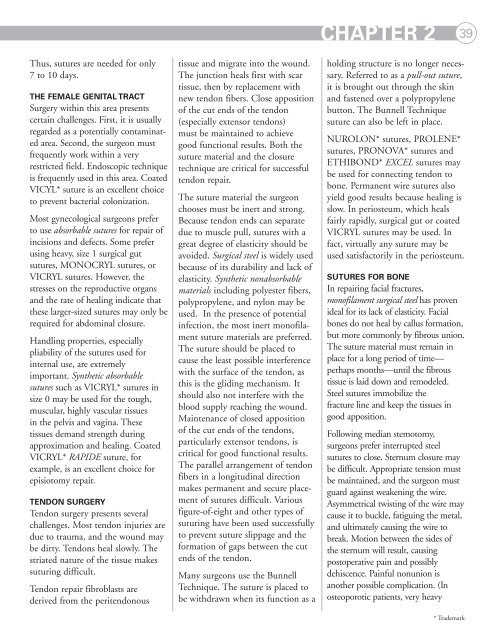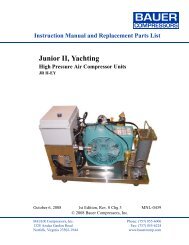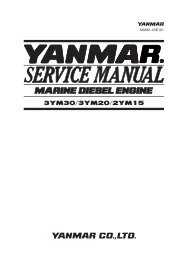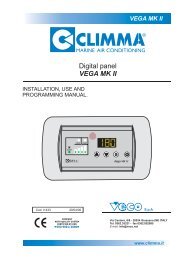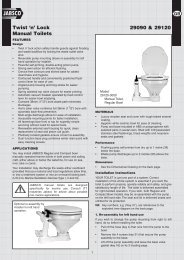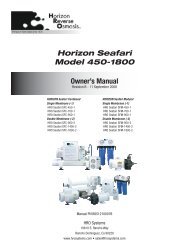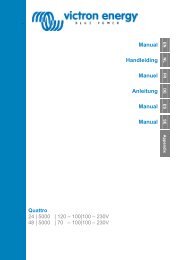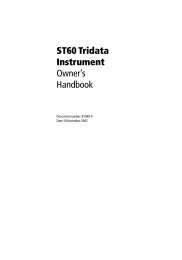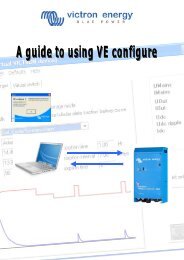Wound Closure Manual (PDF) - Penn Medicine
Wound Closure Manual (PDF) - Penn Medicine
Wound Closure Manual (PDF) - Penn Medicine
Create successful ePaper yourself
Turn your PDF publications into a flip-book with our unique Google optimized e-Paper software.
Thus, sutures are needed for only<br />
7 to 10 days.<br />
THE FEMALE GENITAL TRACT<br />
Surgery within this area presents<br />
certain challenges. First, it is usually<br />
regarded as a potentially contaminated<br />
area. Second, the surgeon must<br />
frequently work within a very<br />
restricted field. Endoscopic technique<br />
is frequently used in this area. Coated<br />
VICYL* suture is an excellent choice<br />
to prevent bacterial colonization.<br />
Most gynecological surgeons prefer<br />
to use absorbable sutures for repair of<br />
incisions and defects. Some prefer<br />
using heavy, size 1 surgical gut<br />
sutures, MONOCRYL sutures, or<br />
VICRYL sutures. However, the<br />
stresses on the reproductive organs<br />
and the rate of healing indicate that<br />
these larger-sized sutures may only be<br />
required for abdominal closure.<br />
Handling properties, especially<br />
pliability of the sutures used for<br />
internal use, are extremely<br />
important. Synthetic absorbable<br />
sutures such as VICRYL* sutures in<br />
size 0 may be used for the tough,<br />
muscular, highly vascular tissues<br />
in the pelvis and vagina. These<br />
tissues demand strength during<br />
approximation and healing. Coated<br />
VICRYL* RAPIDE suture, for<br />
example, is an excellent choice for<br />
episiotomy repair.<br />
TENDON SURGERY<br />
Tendon surgery presents several<br />
challenges. Most tendon injuries are<br />
due to trauma, and the wound may<br />
be dirty. Tendons heal slowly. The<br />
striated nature of the tissue makes<br />
suturing difficult.<br />
Tendon repair fibroblasts are<br />
derived from the peritendonous<br />
tissue and migrate into the wound.<br />
The junction heals first with scar<br />
tissue, then by replacement with<br />
new tendon fibers. Close apposition<br />
of the cut ends of the tendon<br />
(especially extensor tendons)<br />
must be maintained to achieve<br />
good functional results. Both the<br />
suture material and the closure<br />
technique are critical for successful<br />
tendon repair.<br />
The suture material the surgeon<br />
chooses must be inert and strong.<br />
Because tendon ends can separate<br />
due to muscle pull, sutures with a<br />
great degree of elasticity should be<br />
avoided. Surgical steel is widely used<br />
because of its durability and lack of<br />
elasticity. Synthetic nonabsorbable<br />
materials including polyester fibers,<br />
polypropylene, and nylon may be<br />
used. In the presence of potential<br />
infection, the most inert monofilament<br />
suture materials are preferred.<br />
The suture should be placed to<br />
cause the least possible interference<br />
with the surface of the tendon, as<br />
this is the gliding mechanism. It<br />
should also not interfere with the<br />
blood supply reaching the wound.<br />
Maintenance of closed apposition<br />
of the cut ends of the tendons,<br />
particularly extensor tendons, is<br />
critical for good functional results.<br />
The parallel arrangement of tendon<br />
fibers in a longitudinal direction<br />
makes permanent and secure placement<br />
of sutures difficult. Various<br />
figure-of-eight and other types of<br />
suturing have been used successfully<br />
to prevent suture slippage and the<br />
formation of gaps between the cut<br />
ends of the tendon.<br />
Many surgeons use the Bunnell<br />
Technique. The suture is placed to<br />
be withdrawn when its function as a<br />
CHAPTER 2 39<br />
holding structure is no longer necessary.<br />
Referred to as a pull-out suture,<br />
it is brought out through the skin<br />
and fastened over a polypropylene<br />
button. The Bunnell Technique<br />
suture can also be left in place.<br />
NUROLON* sutures, PROLENE*<br />
sutures, PRONOVA* sutures and<br />
ETHIBOND* EXCEL sutures may<br />
be used for connecting tendon to<br />
bone. Permanent wire sutures also<br />
yield good results because healing is<br />
slow. In periosteum, which heals<br />
fairly rapidly, surgical gut or coated<br />
VICRYL sutures may be used. In<br />
fact, virtually any suture may be<br />
used satisfactorily in the periosteum.<br />
SUTURES FOR BONE<br />
In repairing facial fractures,<br />
monofilament surgical steel has proven<br />
ideal for its lack of elasticity. Facial<br />
bones do not heal by callus formation,<br />
but more commonly by fibrous union.<br />
The suture material must remain in<br />
place for a long period of time—<br />
perhaps months—until the fibrous<br />
tissue is laid down and remodeled.<br />
Steel sutures immobilize the<br />
fracture line and keep the tissues in<br />
good apposition.<br />
Following median stemotomy,<br />
surgeons prefer interrupted steel<br />
sutures to close. Sternum closure may<br />
be difficult. Appropriate tension must<br />
be maintained, and the surgeon must<br />
guard against weakening the wire.<br />
Asymmetrical twisting of the wire may<br />
cause it to buckle, fatiguing the metal,<br />
and ultimately causing the wire to<br />
break. Motion between the sides of<br />
the sternum will result, causing<br />
postoperative pain and possibly<br />
dehiscence. Painful nonunion is<br />
another possible complication. (In<br />
osteoporotic patients, very heavy<br />
* Trademark


